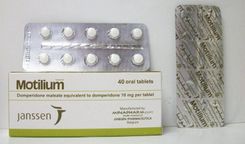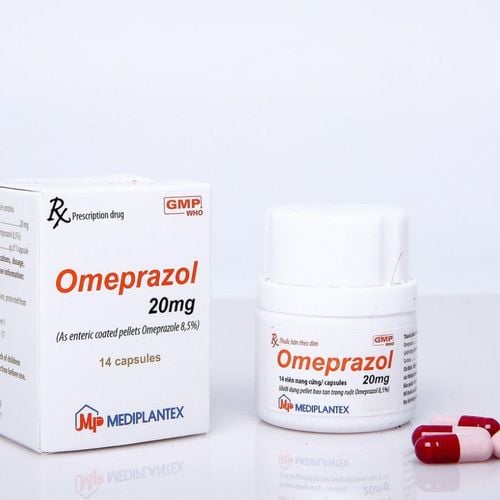This is an automatically translated article.
Assoma medicine contains the active ingredient Somatostatin, which belongs to the group of prescription drugs. So, what is the effect of Assoma, and in what cases is it indicated?
1. What is Assoma?
What is Assoma drug? Assoma medicine has the main ingredient containing the active ingredient Somatostatin (in the form of Somatostatin hydrate acetate) with the content of 3mg. The drug is prepared in the form of a powder and solvent for intravenous infusion, the packaging is in the form of a large box with 25 small boxes, a small box with 1 tube of powder and 1 tube of 2 ml solvent.
2. Indications of Assoma
Assoma drug is indicated for treatment in the following cases:
Treatment in intestinal fistula and pancreatic fistula. Treatment of acute and severe gastrointestinal bleeding due to duodenal or gastric ulcer, hemorrhagic gastritis and esophageal varices confirmed endoscopically. Treatment of symptoms of excessive secretion due to endocrine tumors in the gastrointestinal tract.
3. Usage and dosage of Assoma
3.1. How to use Assoma drug Assoma is prepared in the form of a powder and solution for intravenous infusion should be administered by intravenous infusion. All procedures must be performed by an experienced physician or healthcare professional. Patients should not arbitrarily use at home without the supervision of a doctor.
Due to the relatively short half-life of Assoma of 1 to 2 minutes, continuous intravenous infusion is required. Avoid drug interruptions, because of the risk of side effects. Patients should be closely monitored before treatment with Assoma is discontinued. Once diluted, Assoma solution should be used immediately.
3.2. Dosage of Assoma The initial dose applied to the patient is about 3.5 mcg/kg, for example, 1 ampule of 250 mcg should be used for a person weighing 75 kg, dilute the drug immediately before use with 1 dose. ampoule of physiological saline solution and intravenously slowly over a period of not less than 1 minute. After that, it should be continued with a continuous intravenous infusion at a dose of 3.5 mcg/kg body weight/hour, i.e. 1 ampoule of 3 mg can be used for more than 12 hours. Treatment should be continued for a minimum of 2 days and up to a maximum of 5 days. It should be noted: In the gastrointestinal tract, long-term treatment is required.
4. Undesirable effects of Assoma
During the use of Assoma, in addition to the recorded therapeutic effects, patients may experience the following undesirable effects:
Symptoms of hypoglycemia may occur when starting the procedure. infusion followed by an inhibitory effect on insulin secretion followed by a rise in blood glucose after a period of 2 to 3 hours. For these reasons, concomitant administration of any form of sugar should be avoided during infusion and blood levels should be carefully checked periodically. In cases of necessity, low doses of insulin can be used. Assoma may also inhibit other gastrointestinal hormones. Symptoms such as nausea, flushing, diarrhea, abdominal pain may occur when the injection is done too quickly. Slow injection of Assoma can avoid these adverse symptoms. Usually, these side effects go away when the patient stops taking the drug. However, it is recommended that patients immediately report to their doctor for support during treatment when experiencing unusual symptoms so that they can maintain medication according to the treatment regimen.
5. Assoma drug interactions
The interaction between this drug and other drugs often occurs quite complicatedly due to the influence and impact of many ingredients in the drug. It is recommended that patients, before being prescribed treatment with Assoma, need to inform their doctors about the drugs and supplements they are using during this time so that the doctor can adjust and consider the treatment regimens. effective and reasonable treatment. Patients should not self-medicate without prescription.
Care should be taken when using tobacco, alcohol, fermented or alcoholic beverages during treatment with Assoma, as these agents can cause changes in the composition of the drug, photo affect the effectiveness of treatment.
6. Notes when using Assoma
6.1. Assoma is not contraindicated in the following subjects:
Patients with a history of hypersensitivity to Somatostatin or any of the excipients in Assoma. Patients with congenital or acquired immunodeficiency weaken cellular immunity. Patients with HIV infection have symptoms or evidence of impaired immune function. Do not use for pregnant women, breastfeeding mothers, children. 6.2. Caution when using Assoma drug Assoma drug can cause feelings of ataxia, dizziness when used, so it is recommended that those who drive or are involved in operating machinery before use need to be very careful. important. It is necessary to consult a doctor when using for elderly people over 65 years old.
7. Preservation of Assoma
Store Assoma medicine in a cool, dry place, avoid mold, avoid direct exposure to sunlight or high temperature, avoid the change of substances in the drug, appropriate storage temperature is room temperature. The medicine should be kept in a safe area, out of the reach of children.
Assoma medicine contains the active ingredient Somatostatin, which belongs to the group of prescription drugs. The drug is indicated for the treatment of certain diseases of the gastrointestinal tract. To ensure effective treatment and avoid unwanted side effects, patients need to strictly follow the instructions of the doctor, medical staff performing the infusion.
Follow Vinmec International General Hospital website to get more health, nutrition and beauty information to protect the health of yourself and your loved ones in your family.
Please dial HOTLINE for more information or register for an appointment HERE. Download MyVinmec app to make appointments faster and to manage your bookings easily.













